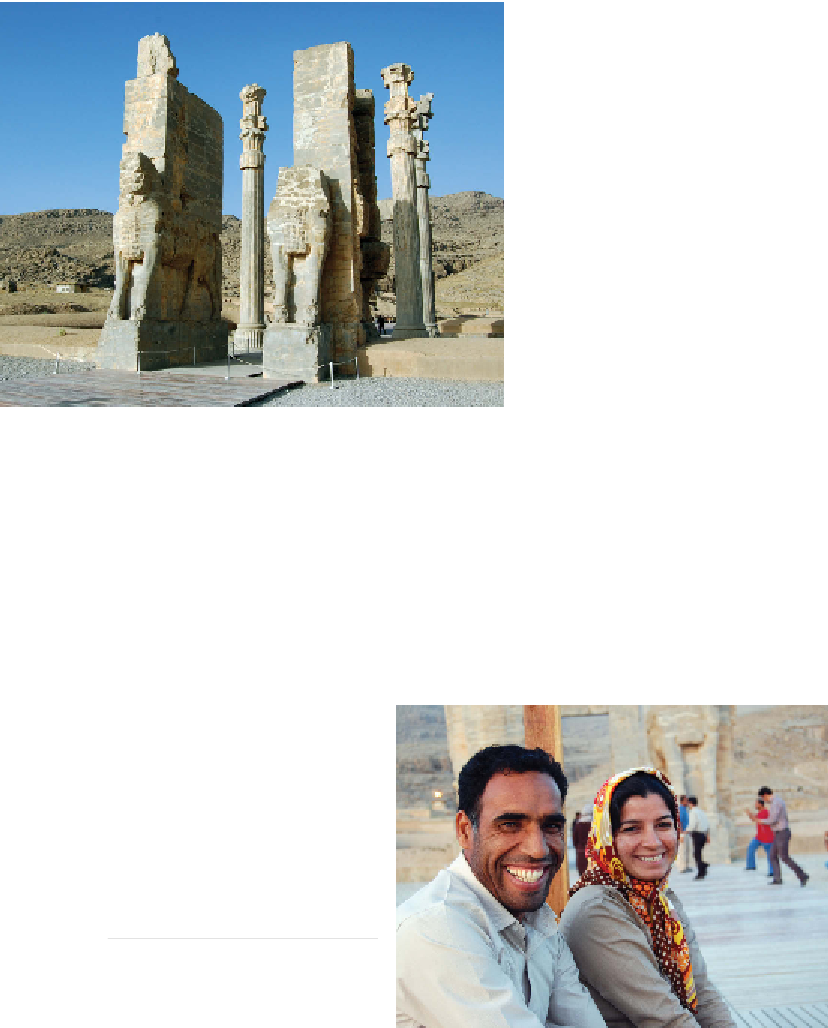Travel Reference
In-Depth Information
country. But I was struck
most by the Iranian peo-
ple who travel here to
savor this reminder that
their nation was a mighty
empire 2,500 years ago.
Wandering the site,
you feel the omnipotence
of the Persian Empire
and gain a strong appre-
ciation for the enduring
strength of this culture
and its people. I imagined
this place at its zenith:
the grand ceremonial
headquarters of the Per-
sian Empire. Immense
royal tombs, reminiscent
of those built for Egyptian pharaohs, are cut into the adjacent mountainside.
h e tombs of Darius and Xerxes come with huge carved reliefs of ferocious
lions. Even today—2,500 years after their deaths—they're reminding us
of their great power. But, as history has taught us, no empire lasts forever.
In 333 B.C., Persepolis was sacked and burned by Alexander the Great,
replacing Persian dominance with Greek culture...and Persepolis has been
a ruin ever since.
The approach to this awe-
inspiring sight is marred by a
vast and ugly tarmac with 1970s-
era parking lot light poles. h is
paved hodgepodge is a reminder
of another megalomaniac ruler. In
1971, the Shah threw a bash with
unprecedented extravagance to
About 2,500 years ago, subjects of the empire (from 28
nations) would pass in “we're not worthy”-style through
the Nations' Gate, bearing gifts for the “King of Kings.”
Iranians—quick to smile for the camera
of a new American friend—visit Perse-
polis to connect with and celebrate
their impressive cultural roots.
















































































